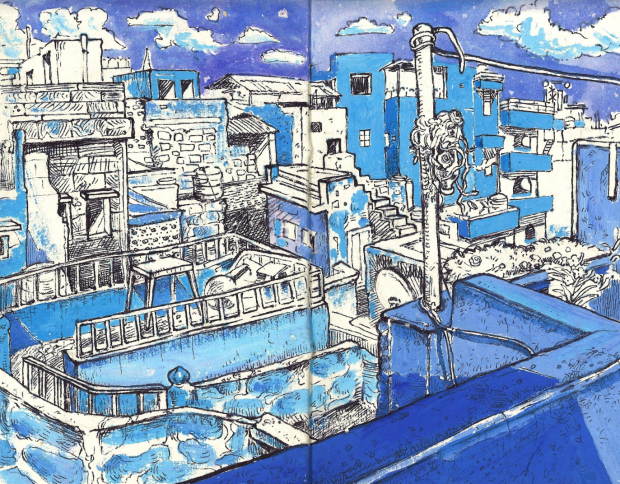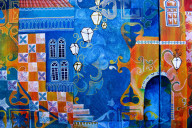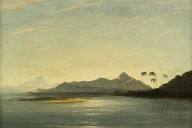Today I’m really excited to share the work of Annelisa Leinbach with you. Since 2012, Annelisa has painted all over the world, from Mongolia to the Middle East to all over Europe and southeast Asia. Here, Annelisa tells us about her time living in Berlin, her experience of painting while travelling, and offers tips for those of you who might be interested in following suit. You can find out more about Annelisa on her website and Instagram.
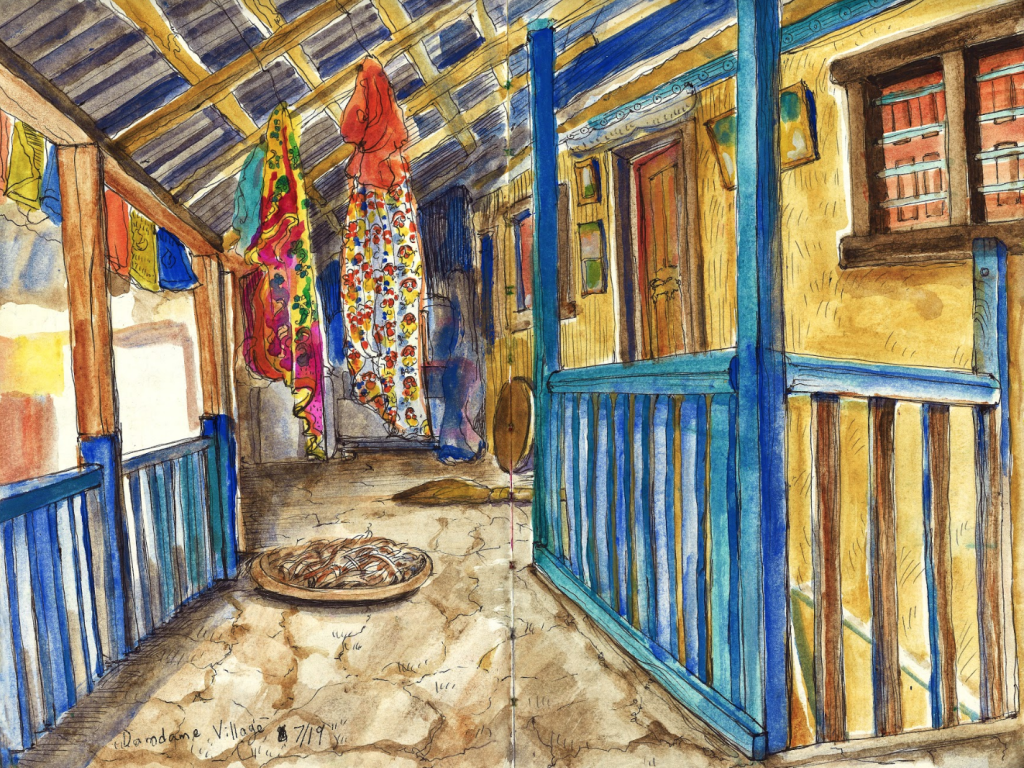
1) Can you tell us a bit about your experience travelling and creating art?
When I entered college to study art and journalism, I was excited to take as many opportunities as I could to travel. I constantly applied to fellowships and searched for opportunities that would fund me to go abroad.
I believe that travel is one of the most valuable experiences to enhance both artistic perspective and general maturity as a person, and I want to spend this more flexible time in my life doing it as much as possible. While a student, I was lucky to spend several months each in Mongolia, Jerusalem, and France, where I filled book after book with sketches.
After graduating, I moved to Berlin, Germany, where I got involved in various projects organizing arts events and producing my own work.
I worked for an organization called Shared Studios, which builds spaces inside of shipping containers for people in different countries to connect with a camera, screen, and microphone and converse in life size as if they were in the same room. I also gave tours on the history of street art in Berlin and began making my own murals.
Eventually, I gave up almost all my belongings and began working online as an illustrator and writing teacher in order to support myself traveling around Asia, which I’ve been doing for nearly a year. I’ve been able to see an incredible array of different places and work with artists in the countries I’ve visited on murals and a gallery exhibition coming up in Kathmandu. When living out of a backpack you can’t carry a lot of art supplies, so most of my work has been concentrated in sketchbooks – some of these sketches are pictured here.
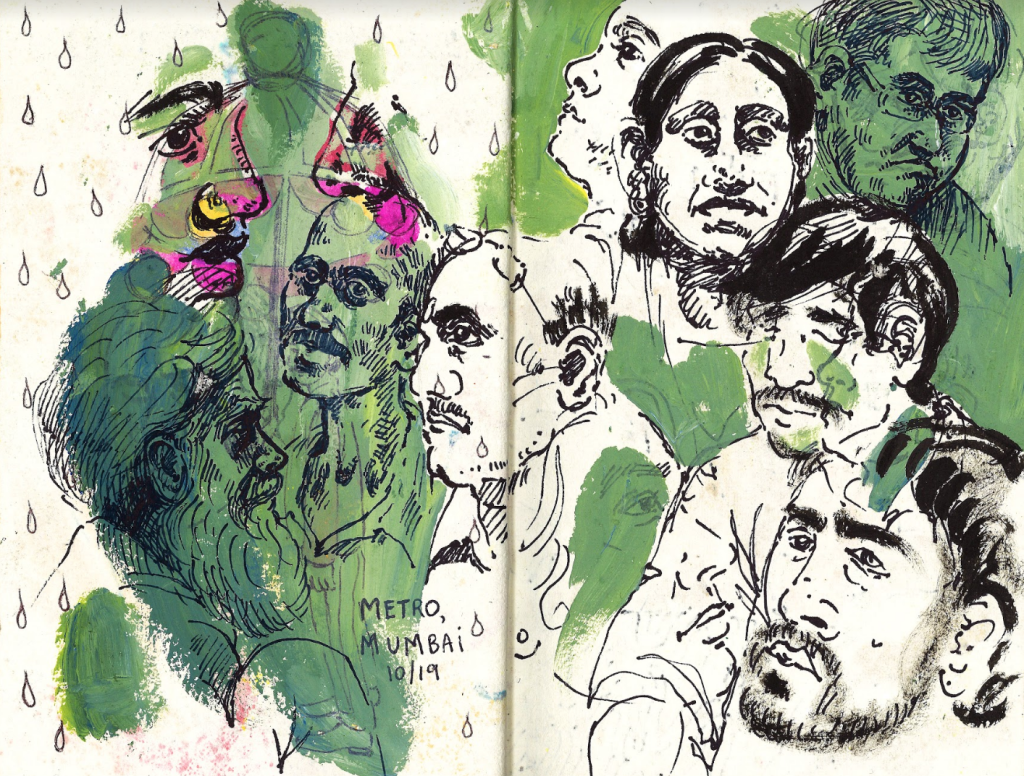
2) What prompted you to start creating art while you travel? Was there a defining moment that set you off on this course?
My parents are both geology teachers, so I grew up spending a lot of time outside, filling up sketchbooks with diagrams of birds and leaves I saw around me. Eventually these sketchbooks became a way to document human and imagined stories as well.
I was inspired by books like JRR Tolkien’s illustrated edition of The Hobbit; it’s amazing how he combines his gift for verbal description with beautiful, intricate paintings that draw the reader into his world-building project as the characters adventure throughout Middle-Earth.
There’s something romantic and timeless about journals and sketchbooks that captivates me. They chronicle memories in an intimate way that is only more valuable in a world where an overabundance of digital media has changed our relationship to video and photography. The slow, careful way of looking at things that sketching encourages is a natural companion to travel.
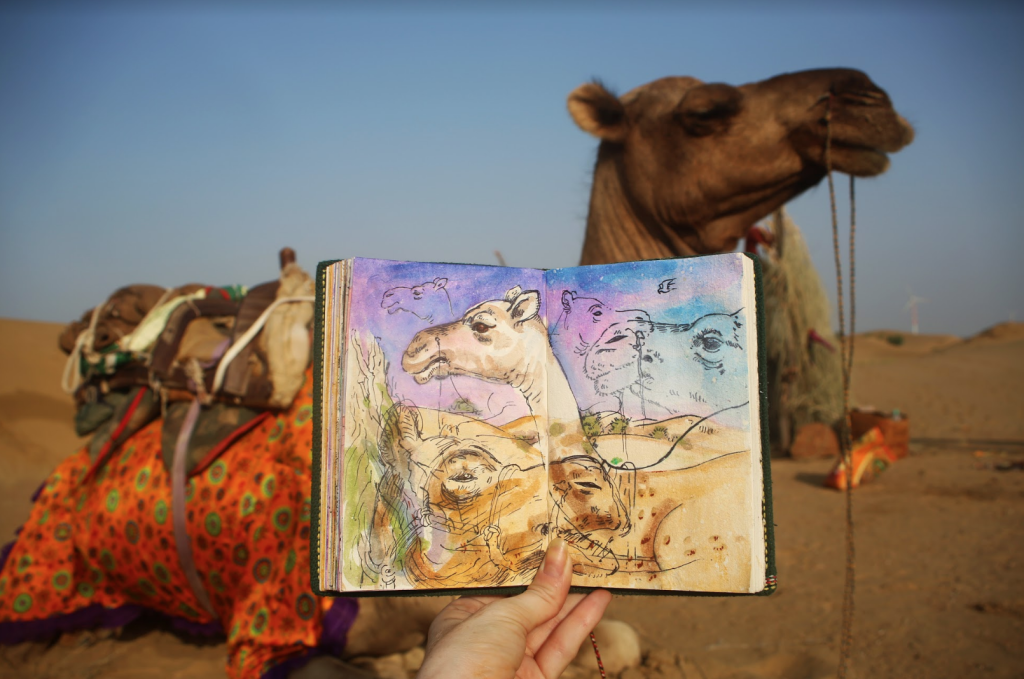
3) Your sketches and paintings have a lovely, unique style to them. How did this develop?
I studied oil painting and historical Western art technique, and I’ve also spent a lot of time learning about Chinese and Japanese brush painting. I’m really inspired by artists that manage to take traditional technical elements and fragment and reorganize them in new ways.
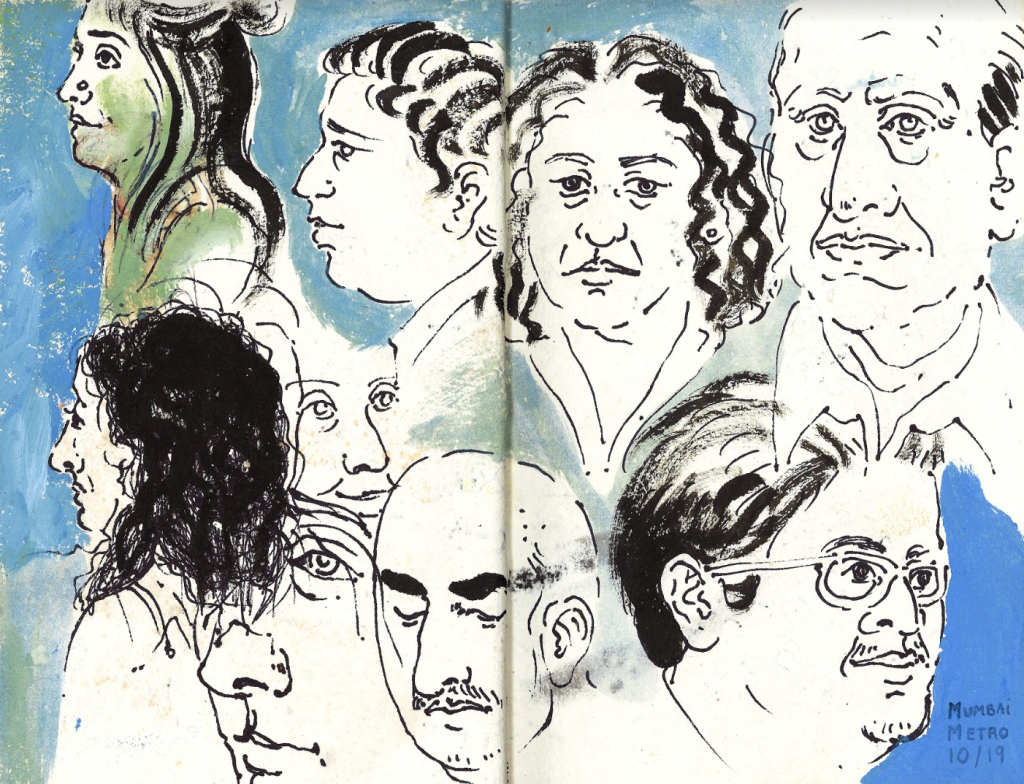
4) Can you talk us through the process you take to make each piece from start to finish?
I try to draw from life as much as I possibly can.
I start by roughly outlining the composition in pencil, and then go over it in pen. I erase the pencil underneath and fill in colors with watercolor, before doing a final layer in more detailed pen on top. I like to overlay different sketches from the same scene, or sometimes even from multiple different places if they work together well as an image.
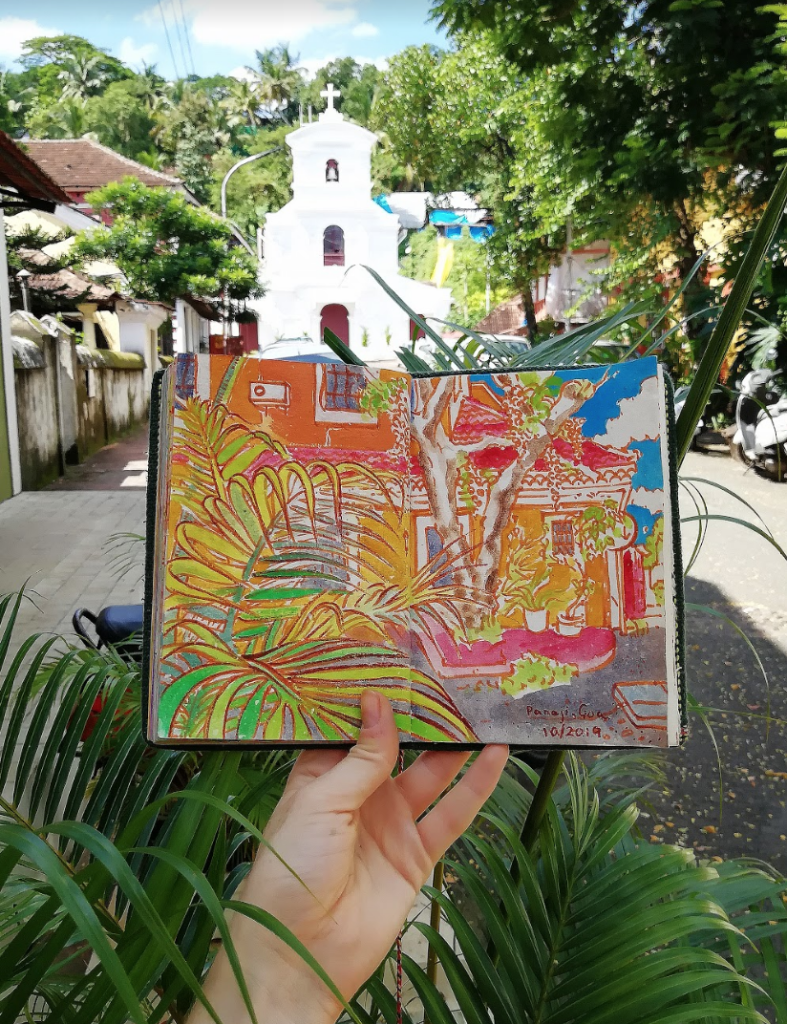
5) What do you hope your illustrations tell viewers about the places you visit?
I think that seeing artistic depictions of your everyday culture is something very powerful and important that we take for granted in many media-dominant countries in the West.
When I paint a portrait of someone or draw a street scene with their shop in it, they tend to be happy because they haven’t seen themselves portrayed as a piece of art. It’s a way to form a brief but intimate connection with all kinds of people.
There are stories to be told in every place in the world about daily life and the way it interacts with history and politics. Although I also enjoy doing this in my own home neighborhood, it’s especially interesting for me to draw in places I don’t know much about because there’s so much for me to learn. Hopefully these sketches can show people new angles on places they only have the chance to know through limited narratives.
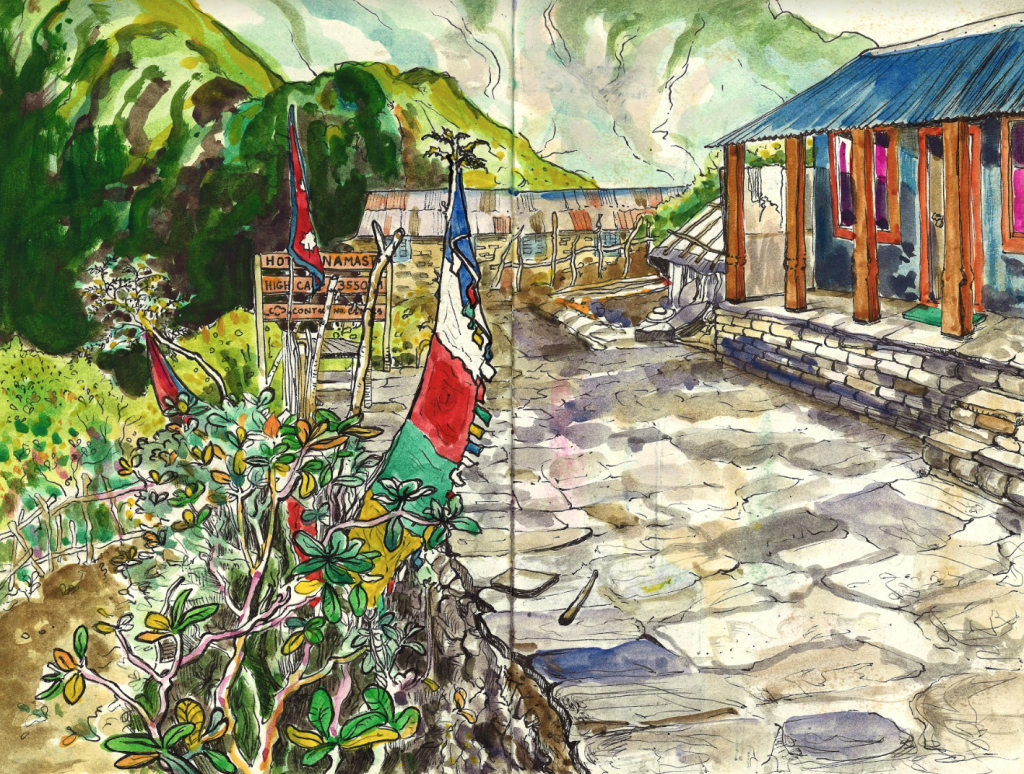
6) What has been your favourite subject to illustrate and why?
I love to illustrate people and the way they move through everyday life in different parts of the world.
Even though the parts of a human face are simple and relatively similar across cultures, there’s so much expression contained in the tiniest changes of the eyes or the lines around someone’s mouth. I could keep exploring portraiture for my entire life and still have more to learn.
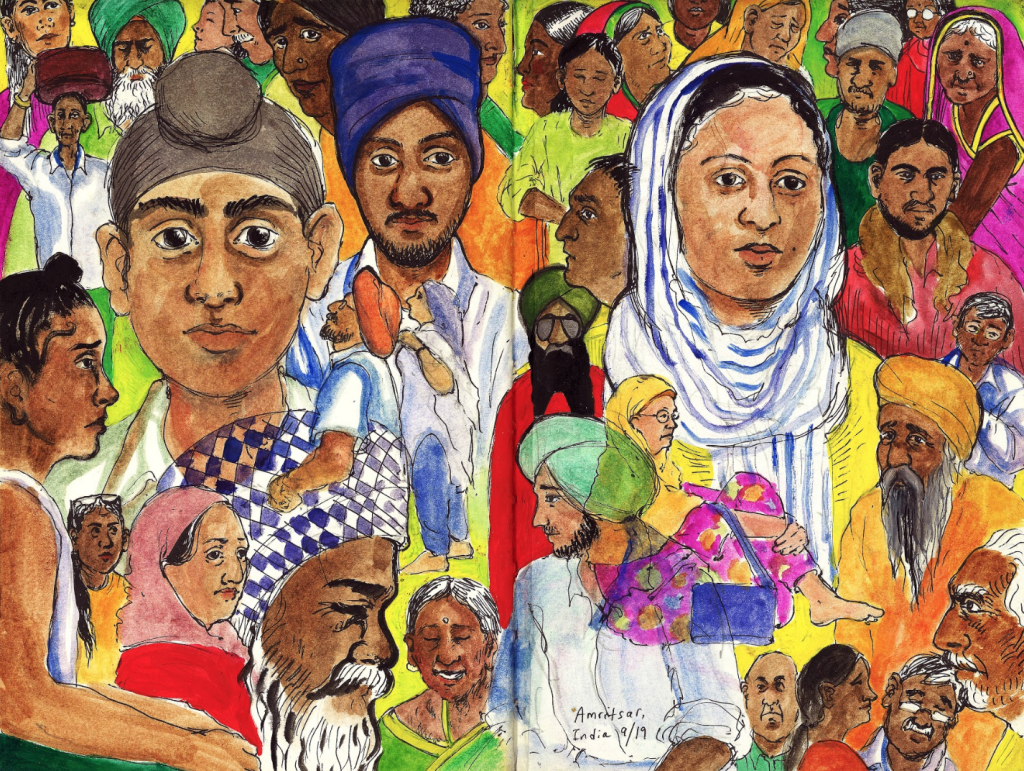
7) What are your working on at the moment?
Right now I’m trying to decide on a place to work for a longer period of time and tackle more involved artistic projects.
My ultimate goal is to center my career around a kind of journalism through painting: traveling and documenting world events through illustration (some inspirations for me are people like Joe Sacco and Molly Crabapple). I want to get involved with more publications on this kind of work and focus my sketches on particular political or environmental stories.
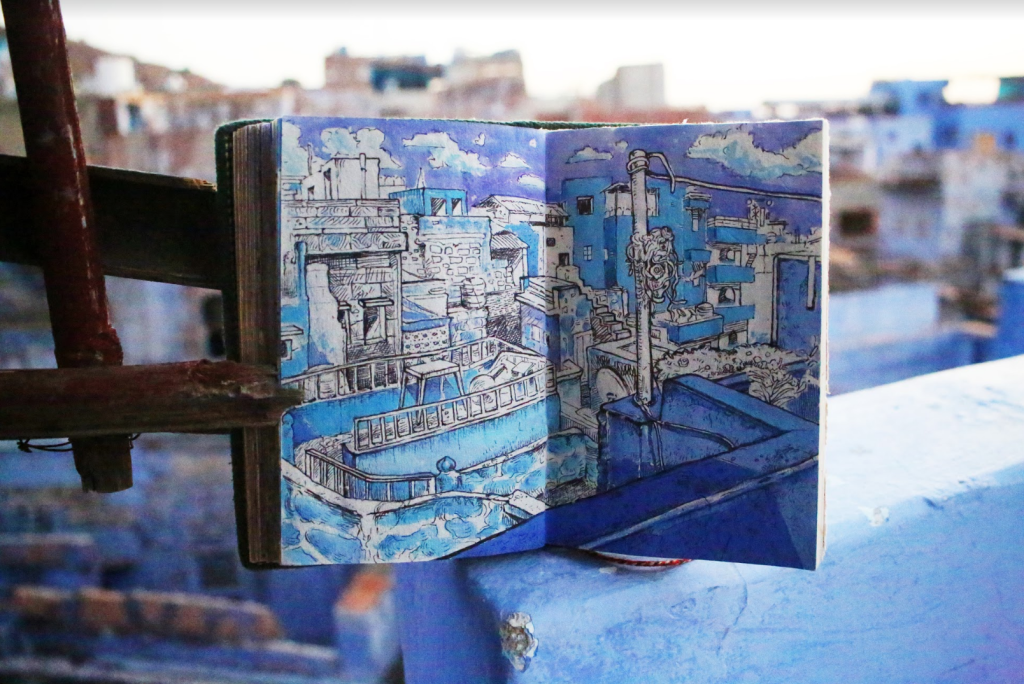
8) Finally, do you have any tips for readers who might be interested in sketching while they travel?
Don’t worry about making your work perfect – a travel sketchbook is more about preserving memories than it is about creating a satisfactory product.
Sitting down in a striking location and tracing the lines and colors around you imprints these details in your mind in a way that simply looking never could. You may even dislike these images and never show them to anyone, but they will still have a special power for you: when you see your sketches later, images of the scene will spring vividly into your mind. Your book will become a collection of moments that you can revisit for the rest of your life.

